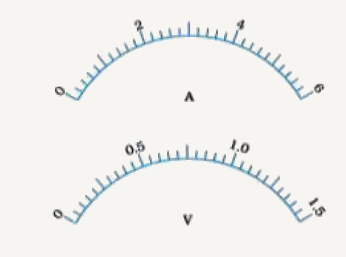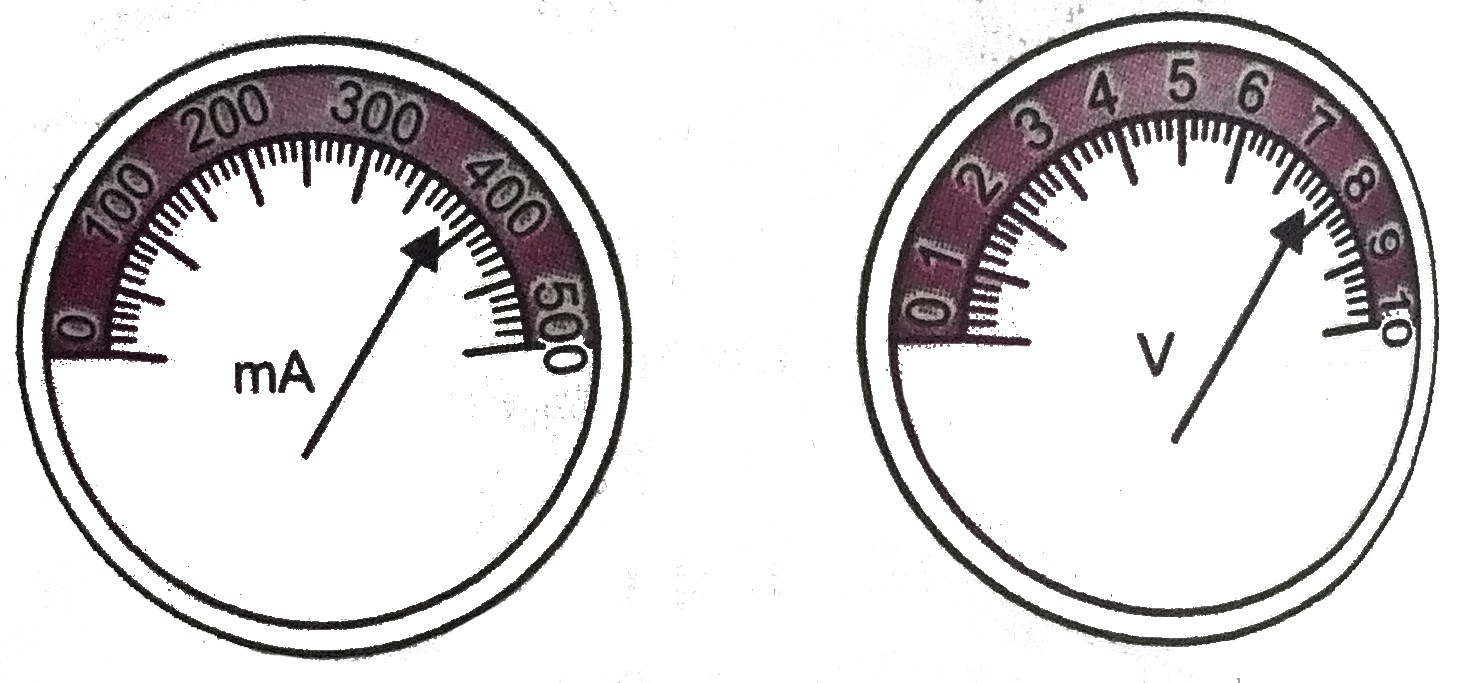Let the resistance of an electrical component remain constant while the potential difference across the two ends of the component decreases to half of its former value. What change will occur in the current through it?Solution in Gujrati
According to Ohm.s law, I = VR
Here, as R = constant, I∝V.
So, when the potential difference across the two ends of the electrical component decreases to half of its former value, the current through it will also decreases to half of its former value.
Topper's Solved these Questions
- BOOK - KUMAR PRAKASHANCHAPTER - ELECTRICITYEXERCISE - QUESTIONS AND ANSWERS (TEXTBOOK ILLUSTRATIONS)14videos
ELECTRICITY
- BOOK - KUMAR PRAKASHANCHAPTER - ELECTRICITYEXERCISE - QUESTIONS AND ANSWERS (MORE TO KNOW)1videos
ELECTRICITY
- BOOK - KUMAR PRAKASHANCHAPTER - ELECTRICITYEXERCISE - PRACTICAL SKILL BASED QUESTION WITH ANSWERS20videos
ELECTRICITY
- BOOK - KUMAR PRAKASHANCHAPTER - MAGNETIC EFFECTS OF ELECTRIC CURRENT EXERCISE - VALUE BASED QUESTIONS WITH ANSWERS15videos
MAGNETIC EFFECTS OF ELECTRIC CURRENT
Similar Questions
A current of 0.5 A is drawn by a filament of an electric bulb for 10 minutes. Find the amount of eletric charge that flows through the circuit.
02:40View SolutionHow does a metal conduct electricity ?
01:27View SolutionThe scales of an ammeter and a voltmeter are shown below:

What is the range of the ammeter and the range of the voltmeter?View SolutionShalini and his brother Amey observed a water-pump working , Shalini inquired how an electric motor works . Amey collected different parts of an electric motor e.g., field - magnets , cabon- brushes , armature , battery , switch, connecting wire , split - rings , etc, and showed them to Shalini . Amey then explained how an armature could rotate.
State the principle how an electric motor to works .02:25View SolutionThe current flowing through a conductor and the potential difference across its two ends are as per reading of the ammeter and the voltmeter shown in (Fig. 3.50). Find the resistance of the conductor.
 .02:40View Solution
.02:40View SolutionKeeping the resistance constant, the potential difference applied across the ends of a components is halved. By how much does the current change?
04:10View SolutionThe current following through a resistor connected in an electric circuit and the potential difference applied across its ends are shown in the figures below : The value of the resistance of the resistor is :
03:13View Solutionमान लीजिये किसी वैघुत अवयव के दो सिरों के बीच विभवांतर को उसके पूर्व के विभवांतर की तुलना में घटाकर आधा क्र देने पर भी उसका प्रतिरोध नियत रहता हैं। तब उस अवयव से प्रवाहित होने वाली विघुत धारा में क्या परिवर्तन होगा?
02:06View SolutionWrite the relation between electric power of a devices with potential difference across its two ends and its resistance .
01:31View Solutionमान लीजिए किसी वैद्युत अवयव के दो सिरों के बीच विभवान्तर को उसके पूर्व के विभवान्तर की पुलना में धटाकर आधा कर देने पर भी उसका प्रतिरोध नियत रहता है। तब उस अवयव से प्रवाहित हान वाला विद्युत् धारा में क्या परिवर्तन होगा?
03:28View Solutionयदि किसी विद्युत अवयव ( element ) के दो सिरों के बीच विभवांतर को उसके पूर्व से विभवांतर की तुलना में घटाकर आधा कर देने पर भी उसका प्रतिरोध नियत रहता है , तो उस अवयव से प्रवाहित होनेवाली विद्युत-धारा में क्या परिवर्तन होगा ?
01:50View SolutionIf a current of 1mA flows through a conductor having potential difference of 1V between its two ends ,what will be the resistance of the conductor?
View SolutionResistance of a conductor is 200Ω and the current through it is 10 mA,What is the potential difference across the two ends of the conductor?
02:51View Solutionವಿದ್ಯುತ್ ಅವಯವದ ರೋಧವು ಸ್ಥಿರಾಂಕವಾಗಿದ್ದು , ಅದರ ಎರಡು ತುದಿಗಳಲ್ಲಿನ ವಿಭವಾಂತರವು ಅದರ ಹಿಂದಿನ ಮೌಲ್ಯದ ಅರ್ಧದಷ್ಟು ಕಡಿಮೆಯಾದರೆ , ಅದರ ಮೂಲಕ ಹರಿಯುವ ವಿದ್ಯುತ್ನಲ್ಲಿ ಆಗುವ ಬದಲಾವಣೆ ಏನು ?
01:44View SolutionIf the value of the potential difference between the ends of an electric component is halved, what will be the change in the value of the flowing current?
02:09View SolutionThe resistance of a resistor is kept constant and the potential difference across its two ends is decreased to half of its former value. State the change that will occur in the current flowing through it.
View Solution

